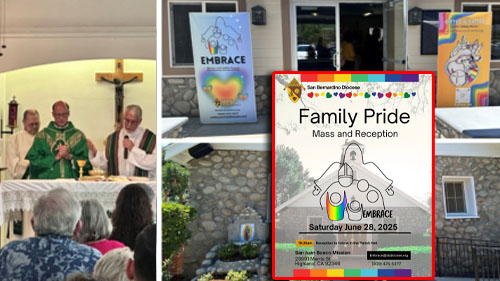| Recent Featured Videos and Articles | Eastern “Orthodoxy” Refuted | How To Avoid Sin | The Antichrist Identified! | What Fake Christians Get Wrong About Ephesians | Why So Many Can't Believe | “Magicians” Prove A Spiritual World Exists | Amazing Evidence For God | News Links |
| Vatican II “Catholic” Church Exposed | Steps To Convert | Outside The Church There Is No Salvation | E-Exchanges | The Holy Rosary | Padre Pio | Traditional Catholic Issues And Groups | Help Save Souls: Donate |  |









 " />
" /> " />
" /> " />
" /> " />
" /> " />
" />




How a group of butterflies flew 2,600 miles across the Atlantic Ocean without stopping
Painted lady butterflies venture far and wide with their impressive migratory patterns that stretch for thousands of miles — but they often travel across land, so they can stop to rest.
Scientists have now found evidence that a group of the winged travelers flew over 2,600 miles (about 4,200 kilometers) across the Atlantic Ocean without stopping, according to a new study published June 25 in the journal Nature Communications.
The finding ends a decade-long mystery that began when entomologist and lead study author Dr. Gerard Talavera came across around 10 painted lady butterflies, known by the scientific name Vanessa cardui, on a beach in French Guiana in October 2013...
“This is actually kind of a record for an insect, especially for a butterfly, to perform such a long flight without possibilities to stop,” said Talavera, who also leads the Worldwide Painted Lady Migration Project, a global citizen science project that tracks the migratory routes of the insects...
The researchers believe that these butterflies took part in their annual migration south from Europe but got lost when the wind blew them into the ocean, he added. The butterflies then likely rode out the trade winds, which blow east to west near the equator, until they reached land in South America.
“Getting suspended in the air column at just the right height to take advantage of the trade winds is nothing short of remarkable,” said Dr. Floyd Shockley, collections manager for the department of entomology at the Smithsonian National Museum of Natural History in Washington, DC, who was not part of the new study. “It kind of begs the question, have they been doing this for a long time, and we just never documented it because we weren’t looking for it in South America?”
Sign up for our free e-mail list to see future vaticancatholic.com videos and articles.
Recent Content
^